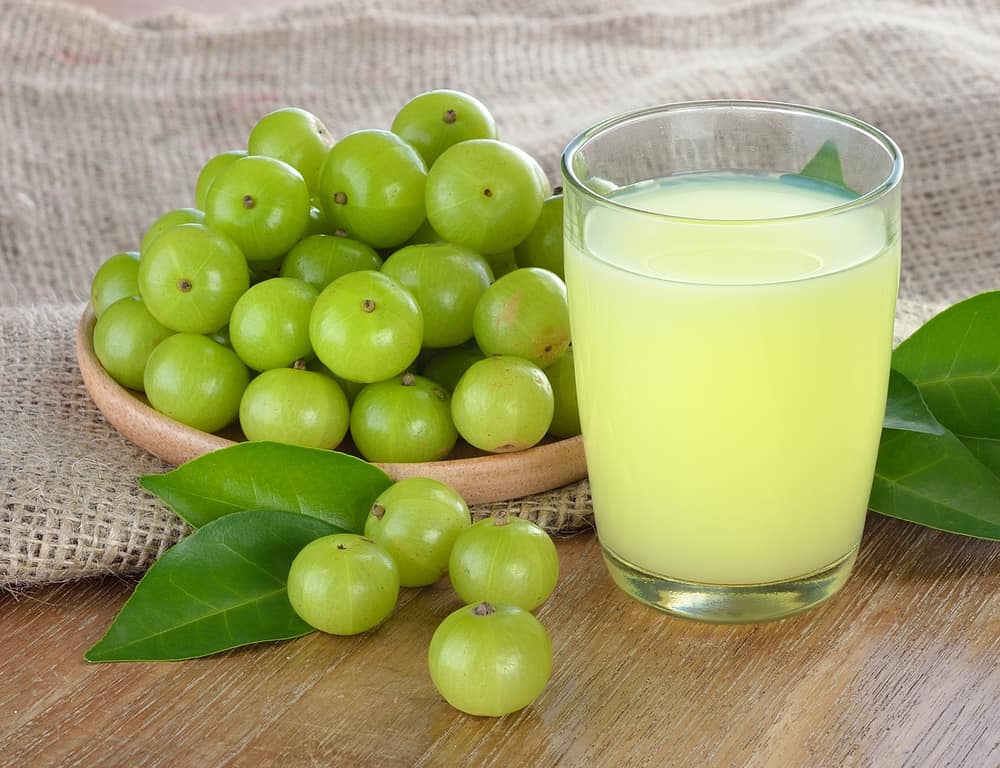
The Best Food for High Cholesterol
BY NUTRITIONFACTS.ORG TIME March 12, 2022
“Medicinal plants are [said to be] nature’s gift to human beings to promote a disease free healthy life while addressing high cholesterol”—here in reference to amla, a fruit, the Indian gooseberry, described as an “Ayurvedic wonder.” You hear a lot of that larger-than-life talk about amla coming out of Indian medical journals. Who can forget “Amla…, a wonder berry in the treatment and prevention of cancer.” Amla is so revered that you find serious scientists, at serious academic institutions, in serious peer-reviewed medical journals, making statements like this: “[E]very part of the [Indian gooseberry] plant has its unique therapeutic characteristic for the remedy of almost all the ailments…[and] can be adopted as a [bold italic] single bullet [against disease].” Okay, then.
I first ran across it in this famous article, looking at the total antioxidant content of thousands of different foods.
I did a series of videos about it ages ago. And, to my surprise, the #1 most antioxidant-packed single whole food on the planet, on average, was amla: dried powdered Indian gooseberries, beating out the prior heavyweight champion, cloves, with, just for comparison’s sake, up to a hundred times or more antioxidants by weight than blueberries.
So, here’s this fruit that has enjoyed “a hallowed position in Ayurveda,” the ancient system of medicine in India—so hallowed that it was mythologically pegged as “the first tree…in the universe.” So, for thousands of years—before we even knew what an antioxidant was—they were revering this plant that just so happens to turn out to be the most antioxidant-packed fruit on the planet Earth. Okay, you got my attention. But, I still needed to see it put to the test.
Well, indigenous tribal healers used amla to treat diabetes. So, researchers decided to give it a try. This is the study that originally bowled me over. In fact, it was the subject of one of my first NutritionFacts videos over five years ago: the effect of amla fruit on the blood sugars and cholesterol levels of normal subjects and type 2 diabetic patients. In my video, I talked about the jaw-dropping effects of five cents’ worth of this powdered fruit — five pennies’ worth—compared to a diabetes drug. But what about the cholesterol effects?
If you take healthy individuals and give them a placebo sugar pill, nothing much happens to their cholesterol. Ideally, we want our total cholesterol under 150. This was a pretty healthy group; the average cholesterol in the U.S. is over 200, which is where the diabetics started out in this study. And, when you give them placebo pills, nothing much happens either. But, give people just about a half-teaspoon of amla powder a day—not some extract or something, just dried Indian gooseberries, a powdered fruit, and this is what happens. That’s like a 35-45% drop in three weeks—absolutely astounding. That’s the kind of thing we see, like six months after putting people on statin drugs.
What we care most about is LDL, though—so-called bad cholesterol, shooting for under at least 70, ideally. No impact of the placebos, but again, just about a half-teaspoon of amla, which would cost you about five cents a day, so like a buck fifty a month—and boom.
These results knocked my socks off. I mean, they’re just unbelievable. That’s why I was so excited, after all these years, to dig back into the amla literature to see if these findings had been confirmed, replicated elsewhere. So, I typed amla into PubMed, and waded through all the papers on using amla to decrease methane in cow farts, and speed the growth of chickens, or hey, what about amla ice cream? After all, amla is packed with fiber and phytonutrients. In contrast, ice cream is not. Therefore—and indeed, amla incorporated into ice cream increases the antioxidant capacity, though I would not recommend it for cholesterol lowering.
Ah, but here we go. A comparative clinical study of amla head to head against the cholesterol-lowering statin drug simvastatin, sold as Zocor—which I’ll cover, next.